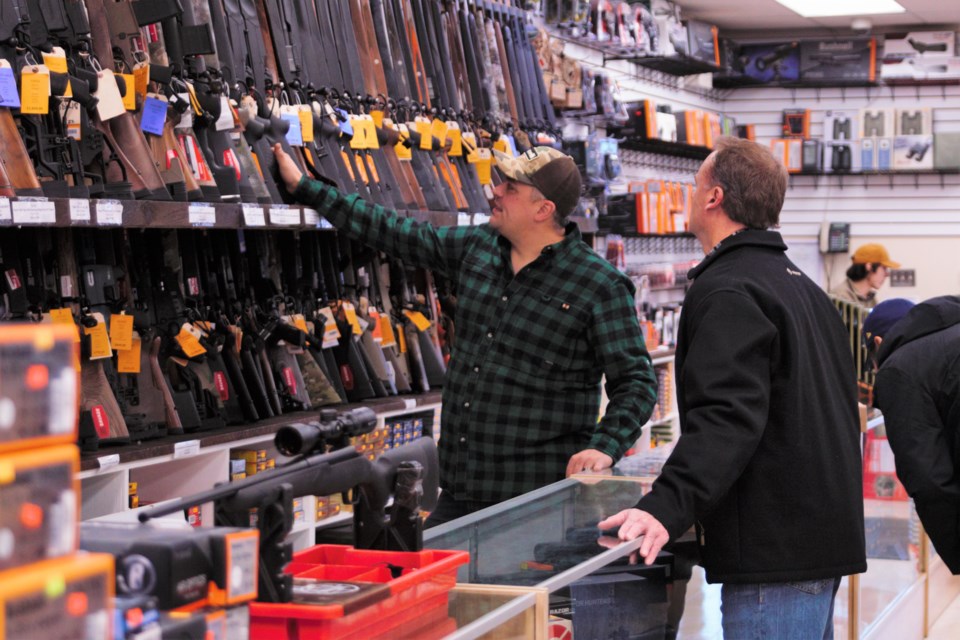Nickel Belt MP Marc Serré says the rights of Canadian hunters should not be impacted by federal efforts to protect the public from deadly non-hunting-related firearms.
Early last month, MP Paul Chiang, a Liberal member of the House of Commons public safety committee, added an amendment to federal gun-control legislation Bill C-21 that could lead to a ban on many models of shotguns and semi-automatic rifles used by hunters and farmers.
While it is not unusual for amendments to be added to legislation at second reading, Serré said, the language should have been “vetted and tested” before inserting it into the bill to ensure the new language didn't have unintended consequences.
In this case, it does.
“The amendment didn’t target hunters,” he said, but the somewhat imprecise nature of the amendment means “it did.” The Nickel Belt MP said he was inundated with calls and emails in December from members of the public concerned how the amendment would affect them.
He said the party is trying to walk a fine line with gun control legislation. The Liberals want to ensure firearms without a legitimate purpose beyond killing — so-called tactical or “assault-style” firearms, and handguns — are banned, while ensuring Canadian hunters and farmers can still access the tools they need.
And while the legislation will definitely impact collectors and sports shooters, as well as hunters, Serré said despite the Liberals’ move to ban more than 1,500 types of firearms, there are still “more than 19,000” different makes that will remain legal.
The MP also said that if a shopper were to visit an outfitter like Ramakko’s, for instance, the guns that are available for purchase today will be the same guns available for purchase when C-21 becomes law.
And although he said the language in the amendments tacked onto the bill should have been more exact, he said the purpose of the amendment is one he supports.
To clarify, the amendment uses a four-way test to add long guns to the banned list: 1. Any long gun that can accept or potentially accept a detachable magazine with more than five rounds; 2. Any long gun that can generate more than 10,000 joules of energy; 3. Any long gun with a muzzle wider than 20 millimetres, and; 4. A by-name list of semi-automatic firearms.
Collectors, in particular, will be impacted by the energy limit and muzzle width because, while these are aimed at banning things like .50 calibre rifles and mortars, it will also impact firearms like valuable antique blunderbusses popular with collectors, and the ceremonial cannons used by some cadet corps.
Serré said the goal is to enshrine in legislation what is a legal firearm and what isn’t so that a subsequent government can’t use an order in council to change the playing field. He also said the language must be such that firearms manufacturers can’t make tweaks to weapon designs to get around the legislation.
With all that said, though, the amendment cannot stand as it is, the Nickel Belt MP said, and he will vote against it if changes aren’t made, and he doesn’t think rural members of parliament will support it either.
Hearings on C-21 will be held in February and March, and Serré said he expects outstanding issues with the bill will be fixed so that it can proceed.
“If it stays as is … I don’t think rural Liberals and NDP (MPs) will support it,” he said.
In the meantime, Serré is lobbying in the background for changes, he said. He said the party’s rural caucus and the Ontario caucus are working on it, addressing the issue with the Prime Minister's Office and the Department of Justice, as well as Public Safety Minister Marco Mendicino.
He said he is also working on what he called “technical briefings” on the legislation for hunting groups and other groups in his riding that use firearms.
Serré said he also plans on visiting a few local ranges to better understand sport shooting and the needs of sport shooters.
Asked why the federal government seems so concerned with legal firearms when the perception of many members of the public is that illegal, black market guns smuggled across the border from the United States are the real problem in terms of gun crimes.
Serré acknowledged this, but said the handgun legislation and the C-21 amendment are part of a “spectrum” of public safety legislation, but it’s important to remember Canada’s southern neighbour.
“We’re spending more on border security ($381 million over five years), we’re seizing more guns, but we still live along the world’s largest undefended border and next to the world’s leading gun manufacturer,” he said.
Increasing border security and supporting police efforts to combat gangs and illegal drugs, as well as legislation to prevent the sale of the deadliest kinds of guns, is part of that “spectrum to keep people safe.”
Serré said there are extremes on both sides of the issue, with people on the right pushing for less regulation of firearms and those on the left pushing for more regulation, but what’s really needed is to find the middle ground of prioritizing public safety while protecting people’s ability to own guns should they want them.
Mark Gentili is the editor of Sudbury.com.



